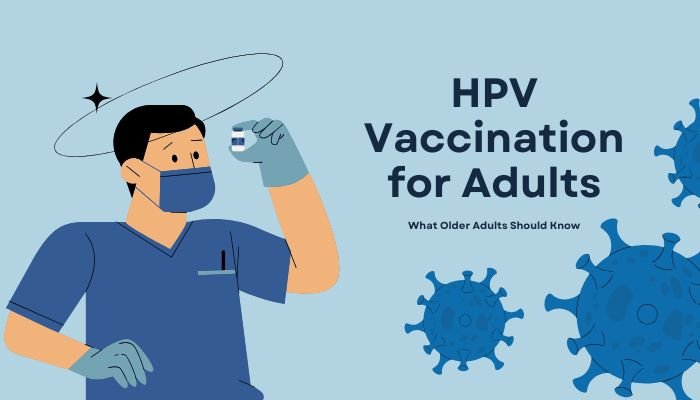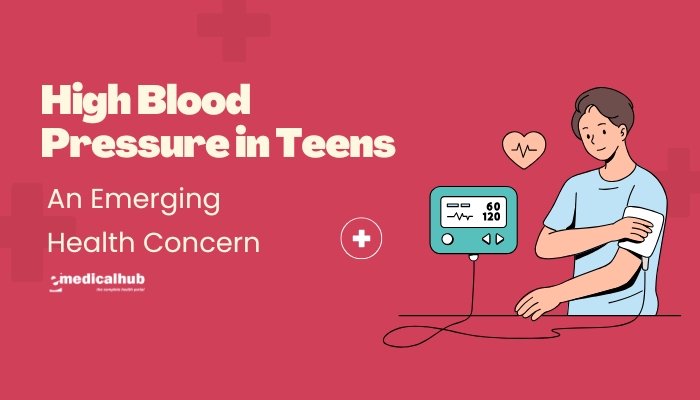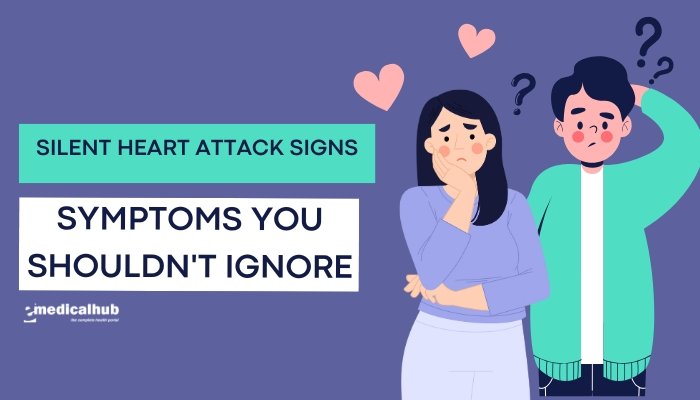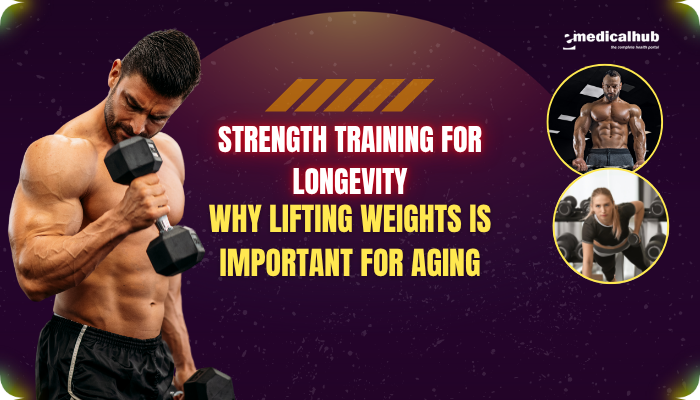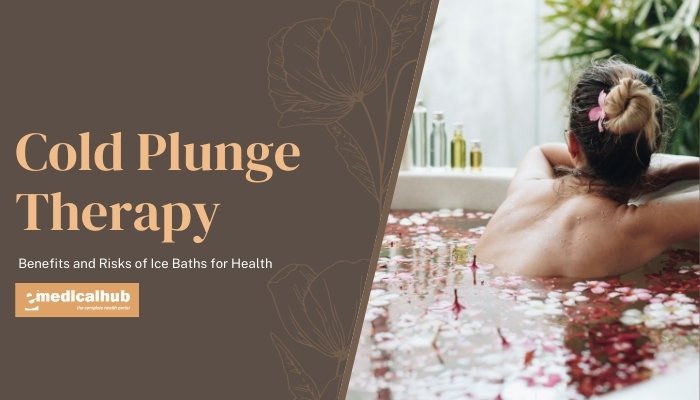Introduction
Human Papillomavirus (HPV) is a common sexually transmitted virus known for causing warts and, in some cases, leading to certain cancers, including cervical, anal, and oropharyngeal cancers.
While HPV vaccination is often associated with adolescents and young adults, there is a growing awareness of its potential benefits for older adults who remain sexually active or have unique risk factors. Recent changes in recommendations have led many individuals over age 26 to question whether receiving the vaccine could still be beneficial.
This article explores the basics of HPV and how the virus is transmitted, the rationale behind standard vaccination guidelines, evolving recommendations for adults over the typical cutoff, potential benefits and limitations for older recipients, and how to discuss personalized decisions with a healthcare provider.
With informed insight, older adults can determine if HPV vaccination might fit their needs, especially as longevity, relationships, and sexual health remain key to overall well-being at any age.
What Is HPV?
Virus Overview
- High Prevalence: Human Papillomavirus infects millions each year; most sexually active individuals encounter it at some point in life.
- Multiple Strains: Over 150 known HPV types. Some cause benign warts, while “high-risk” strains (e.g., HPV 16, 18) are linked to cancers.
- Transmission: Primarily through skin-to-skin sexual contact (vaginal, anal, oral). Barriers like condoms reduce, but do not eliminate, the risk.
HPV-Related Cancers
- Cervical Cancer: Nearly all cervical cancers have HPV involvement. HPV 16 and 18 cause roughly 70% of these cases.
- Oropharyngeal Cancers: Involving the throat, tonsils, base of the tongue. HPV-related cases are on the rise.
- Anal and Penile Cancers: Men can also be affected, underscoring HPV’s broad impact.
Immune Response and Clearance
- Transient Infections: In many cases, a robust immune system clears HPV naturally within months or a couple of years.
- Persistent Infections: When high-risk HPV lingers, cells can undergo malignant transformation over time.
Key Point: HPV infection is widespread, and vaccination can help prevent certain strains responsible for the majority of HPV-related cancers.
Standard HPV Vaccination Guidelines (Younger Populations)
Adolescents and Young Adults
- CDC Recommendations: Typically, vaccination is advised for boys and girls starting at ages 11–12, with catch-up vaccines recommended through age 26 (in the U.S.).
- Dose Series: If vaccinated before age 15, two doses suffice; older adolescents and adults require a three-dose series.
- Types of Vaccines: In many countries, the 9-valent HPV vaccine (Gardasil 9) is most common, protecting against nine HPV strains, including seven high-risk types and two that cause genital warts.
Importance of Early Vaccination
- Pre-Exposure: The vaccine is most effective if administered before sexual debut, minimizing risk of initial HPV contact.
- Cancer Prevention: Early immunization drastically reduces rates of cervical, anal, and other HPV-related malignancies.
Evolving Recommendations: Adults Over Age 26
Why the Traditional Cutoff at 26?
- Population Studies: Younger recipients are less likely to have encountered multiple HPV strains, so the vaccine yield is high.
- Cost-Effectiveness: Data historically indicated diminishing returns as exposure risk accumulates.
- Changing Dynamics: Over time, lifestyle factors, new partnerships, divorce, or changes in relationship status might still expose older adults to HPV.
CDC’s Updated Guidance
- Ages 27–45: In 2019, the U.S. Food and Drug Administration (FDA) expanded approval of the 9-valent HPV vaccine for individuals up to age 45. The CDC states that HPV vaccination for ages 27–45 should be a shared clinical decision—meaning individualized discussions about potential benefits vs. limited advantage.
- Rationale: Some older adults may remain at risk if they have not been previously infected with certain HPV strains or if they have new or multiple partners.
International Variations
- Not Universal: Not all countries automatically fund or recommend HPV shots beyond age 26.
- Targeted Approaches: Some national programs consider extending vaccination or recommend it for high-risk adults.
Note: Adult vaccination decisions hinge on sexual history, risk of new exposures, prior immunization, and conversation with healthcare professionals.
Considerations for HPV Vaccination in Older Adults
Potential Benefits
- Protection Against Unencountered Strains: If an adult has not encountered all high-risk strains, the vaccine can still prevent future infection.
- Reduction in Genital Warts: The vaccine targets HPV 6 and 11, which cause ~90% of genital warts. Even older adults can benefit if previously unexposed.
- Preventing Oropharyngeal and Anal Cancers: Especially relevant for men and women with risk factors, or new relationships, or men who have sex with men (MSM).
- Peace of Mind: Some appreciate the vaccine’s security if they anticipate new or multiple sexual partners (e.g., after divorce or widowhood).
Limitations and Considerations
- Reduced Benefit if Already Exposed: A single dose does not treat active infections or remove existing HPV.
- Partial Protection: Past or present infection with one HPV strain does not preclude infection from others, but benefit might be lower than if vaccinated earlier.
- Cost: Insurance coverage for 27–45 age group can be inconsistent. Out-of-pocket expenses might be high.
- Safety: Generally well-tolerated. Common side effects are injection site pain, mild fever, or headache. Serious adverse events are rare.
Who Might Benefit Most in the 27–45 Range?
- Individuals with Minimal Past Exposure: Fewer sexual partners historically.
- Those Re-Entering Dating: After relationship changes or widowhood.
- High-Risk Groups: MSM, immunocompromised, or with persistent partner turnover.
- Personal Preference: Some older adults are keen to reduce any chance of HPV-related disease, valuing partial immunity.
Common Questions About HPV Vaccination for Older Adults
“I’m Already in a Monogamous Relationship—Do I Still Need the Vaccine?”
- Stable Relationship: If both partners have had limited prior sexual exposure and remain monogamous, HPV infection risk could be minimal.
- Future Uncertainty: Divorce, partner’s passing, or new sexual partner might appear unexpectedly, raising risk. The decision rests on personal preference and perceived future risk.
“Will It Benefit Me if I Was Likely Exposed in the Past?”
- Multiple Strains: Even if you’ve encountered one or two HPV types, the vaccine could prevent others you have not yet acquired.
- No Diagnostic for All Strains: While certain tests exist for high-risk HPV, they do not cover every subtype. It is challenging to confirm which strains you might already have cleared or never contracted.
“What If I’m Immunocompromised?”
- Higher Risk of Persistent HPV: People with compromised immune systems (HIV, organ transplant recipients, etc.) could benefit more from vaccination, as clearing infections naturally is tougher.
- Consult Specialists: Infectious disease or immunology experts can guide the timing and necessity of vaccination.
“Does the Vaccine Cure Existing HPV or Warts?”
- Not a Therapeutic Vaccine: HPV vaccines prevent future infection. They do not treat active infections, warts, or precancerous lesions.
- Still Need Screening: Regular Pap smears (for cervical health) or other relevant checks remain essential if you have an existing diagnosis.
Practical Steps for Older Adults Considering HPV Vaccination
Assess Personal Risk
- Relationship/Partner History: Multiple or new partners can increase exposure risk.
- Past HPV-Related Issues: If you had prior abnormal Pap tests or HPV infections, weigh the chance of having encountered most high-risk strains.
- Immunization Status: Confirm if you received any HPV shots in your teens or 20s.
Discuss with Healthcare Providers
- Risk-Benefit Dialogue: Ask how likely you are to benefit from partial coverage.
- Financial Factors: Inquire about coverage, typical out-of-pocket costs if your insurance does not cover adult vaccination.
- Exclusionary Conditions: Some may not be recommended for immediate vaccination if pregnant or severely ill at the time of the shot.
Plan the Series (If You Decide to Vaccinate)
- Three-Dose Schedule: For individuals older than ~15, typically 0, 1–2 months later, and 6 months after the first dose.
- Adherence: Keep track of appointments to complete the full series. Missing doses reduces protective effect.
- Monitor Side Effects: Expect mild injection site discomfort or slight fever. Any unusual reaction should be reported to a doctor.
Remain Up-to-Date with Cancer Screenings
- Regular Pap/HPV Co-Testing: Even if vaccinated, you can still have or acquire HPV strains not covered by the vaccine or pre-existing infections.
- Breast/Prostate Checks: Holistic health maintenance includes relevant screenings for age and sex.
- Lifestyle: Balanced diet, safe sexual practices, and routine healthcare visits all complement vaccine protection.
Essential Facts About HPV Vaccines
Types of Vaccines
- Gardasil 9: Covers HPV strains 6, 11 (warts), and 16, 18, 31, 33, 45, 52, 58 (high-risk).
- Earlier Versions: Quadrivalent Gardasil and bivalent Cervarix are less commonly used in many regions now, replaced by 9-valent formulations.
Efficacy
- Prevention Power: Gardasil 9 can prevent about 90% of HPV-related cancers if administered pre-exposure.
- Cancer Impact: Large population studies show a notable drop in precancerous lesions and certain cancers in heavily vaccinated demographics.
- Durability: Data suggests strong, long-lasting immunity with no need for boosters currently recommended.
Safety Profile
- Global Experience: Over 300 million doses distributed worldwide, with robust safety tracking.
- Common Reactions: Injection site pain, redness, minor swelling, possibly mild fever or headache.
- Severe Reactions: Anaphylaxis or severe allergies are exceedingly rare.
Self-Care and Sexual Health Education
Condom Use and Barrier Protection
- Still Advised: HPV is transmitted via skin contact, so condoms do not completely eliminate risk but substantially reduce it.
- STI Prevention: Also helps prevent other infections (chlamydia, gonorrhea, HIV).
HPV Testing and Pap Screening
- Women Up to Age 65: Regular cervical cancer screenings recommended, possibly combining Pap test and HPV test every 5 years if normal results.
- Post-Hysterectomy: If the cervix is removed for reasons unrelated to cancer, guidelines vary. Consulting a provider clarifies if continued screening is necessary.
Communication with Partners
- Disclosure: If HPV or abnormal Pap history exists, discussing it fosters understanding and shared decisions about protection.
- Collaborative Protection: Partners might consider vaccination if they meet age or risk criteria.
Myths and Facts About Adult HPV Vaccination
- Myth: “If I am married, I cannot get HPV.”
Fact: HPV can occur in monogamous couples if one partner had prior exposure. Also, relationships can change over time. - Myth: “The vaccine is only for adolescents.”
Fact: While recommended primarily for youth, adults up to 45 can still gain some benefit, depending on exposure risk. - Myth: “The vaccine cures or eliminates existing HPV.”
Fact: It prevents new infections, not existing ones. - Myth: “HPV vaccination fosters riskier behavior.”
Fact: Studies show receiving the vaccine does not significantly alter sexual behavior patterns. - Myth: “After age 30, it’s pointless.”
Fact: Partial benefit remains for those not exposed to all targeted strains or facing new exposures.
Cost, Insurance, and Accessibility
Coverage Patterns
- Younger Groups: Often covered under childhood immunization programs or private insurance if under 26.
- Older Adults: Coverage is less consistent. The expanded age approval might not guarantee insurance coverage for ages 27–45.
- Check Your Plan: Employer-based or ACA-compliant insurance might provide coverage under preventive services, but policies vary.
Out-of-Pocket Scenarios
- Price Per Dose: The 9-valent HPV vaccine can cost a few hundred dollars per dose without insurance.
- Payment Plans: Some clinics or pharmacies offer installment options.
- Government Programs: Low-income or specialized programs may cover or subsidize vaccines for those who meet certain criteria.
Access in Different Countries
- Universal Healthcare: Some nations have national guidelines funding HPV vaccination up to certain ages.
- Developing Regions: Focus often remains on adolescent coverage. Adult vaccination might be limited or out-of-pocket.
The Future of Adult HPV Vaccination
Research on Efficacy in Older Adults
- Emerging Studies: More data is being gathered on real-world impact for women and men aged 27–45. Preliminary results hint at reduced infection rates, but magnitude of protection can vary.
- Longitudinal Monitoring: Observing how adult vaccination affects rates of oropharyngeal cancers or other HPV-related malignancies over decades is ongoing.
Potential Multi-Cancer Prevention Strategies
- HPV’s Role: With rising HPV-related head and neck cancers, older adult vaccination might gain traction, especially for at-risk populations (e.g., smokers, high sexual partner turnover).
- Men’s Inclusion: Historically overshadowed by cervical cancer concerns, men stand to benefit from the vaccine as well.
International Perspective on Herd Immunity
- Population Benefit: Broad immunization can reduce overall virus circulation, indirectly protecting unvaccinated groups or older demographics.
- Closing Gaps: Expanding coverage to adult age brackets might accelerate herd immunity, but cost-benefit analyses guide policy decisions.
Balancing Risks and Benefits: Making an Informed Choice
Weighing Realistic Outcomes
- Partial vs. Full Protection: Some older adults may carry certain HPV strains but not others, so the vaccine could still prevent additional infection.
- Over-Expectations: The vaccine is not a guarantee against all HPV or unstoppable progression of existing infections.
- Peace of Mind: Reducing potential exposure can lighten mental burden around sexual activity or new relationships.
The Decision-Making Process
- Risk Assessment: Evaluate personal sexual history, relationship status, potential for future new partners, and family cancer patterns.
- Financial Considerations: Check coverage, weigh personal budget.
- Provider Consultation: Seek a physician or nurse practitioner experienced in adult immunization. Ask about potential interactions or any recommended screenings prior to vaccination.
Ongoing Health Maintenance
- Annual Wellness Visits: Even vaccinated adults need routine checkups for other health concerns.
- Regular Screenings: Women should adhere to cervical cancer screening intervals. Men might consider anal or oropharyngeal checks if at higher risk.
- Lifestyle: Good nutrition, exercise, and not smoking further reduce cancer risk.
Conclusion
Human Papillomavirus vaccination has long been recognized as a critical measure to protect adolescents from cervical and other HPV-linked cancers. Yet awareness is growing about its potential role beyond age 26, especially for those who may be newly single, have minimal prior exposure, or face high-risk conditions. The U.S. FDA’s extension of the vaccine’s age range to 45 signals a shifting landscape, emphasizing that older adults, too, can benefit in certain scenarios.
Deciding whether to vaccinate requires a personalized approach: understanding your risk factors, prior HPV exposure likelihood, relationship status, and insurance coverage. Many older adults find the partial protection worthwhile, if only to mitigate future risk and gain reassurance about new sexual relationships. However, the vaccine is not a cure for existing infections, nor does it override the need for continued screening. By maintaining consistent checkups, practicing safe sex, and following a healthy lifestyle, older adults can add HPV vaccination to their arsenal of cancer-prevention strategies if it aligns with their personal and medical profile.
Ultimately, informed conversations with healthcare providers remain key. Through shared decision-making—balancing cost, potential benefits, and personal health priorities—older individuals can determine if HPV vaccination is a step that helps secure long-term peace of mind.
References
- Centers for Disease Control and Prevention. HPV (Human Papillomavirus) Vaccination: What Everyone Should Know. CDC website. 2022.
- Food and Drug Administration. FDA approves expanded use of Gardasil 9 to include individuals 27 through 45 years old. FDA News Release. 2018.
- Meites E, Szilagyi PG, Chesson HW, et al. Recommended adult immunization schedule, United States, 2022. Ann Intern Med. 2022;176(9):645–659.
- Saslow D, Andrews KS, Manassaram-Baptiste D, et al. Human papillomavirus vaccination guideline update: American Cancer Society guideline adaptation. CA Cancer J Clin. 2020;70(4):274-280.
- Kjaer SK, Nygård M, Dillner J, et al. A 12-year follow-up on the long-term effectiveness of the quadrivalent human papillomavirus vaccine in a Nordic cohort study. J Natl Cancer Inst. 2020;112(12):1206-1215.
- Palefsky JM, Giuliano AR, Goldstone S, et al. HPV vaccine against anal HPV infection and anal precancer in men who have sex with men. N Engl J Med. 2011;365(17):1576-1585.
- Giuliano AR, Wilkin T, Goldstone S, et al. Efficacy of quadrivalent HPV vaccine in men: a subanalysis by race and region. J Infect Dis. 2015;211(8):1060-1065.
- Bogani G, DI Donato V, Sopracordevole F, et al. Age extension of prophylactic HPV vaccines: new insights and recent data. Gynecol Oncol. 2021;160(2):532-538.
- Drolet M, Bénard É, Pérez N, et al. Population-level impact and herd effects following the introduction of human papillomavirus vaccination programmes: updated systematic review and meta-analysis. Lancet. 2019;394(10197):497-509.
- Patel C, Brotherton JML, Pillsbury A, et al. The impact of human papillomavirus vaccination on cervical cancer in populations of women with and without a prior history of immunization. J Infect Dis. 2020;221(7):1015-1020.
- Garland SM, Paavonen J, Jaisamrarn U, et al. Prior human papillomavirus-16/18 infection and protective efficacy of the HPV-16/18 vaccine. N Engl J Med. 2009;361(19):1838-1847.
- Harder T, Wichmann O, Klug SJ. Evidence-based decision-making in HPV vaccination policy: the role of cost-effectiveness analyses. Bundesgesundheitsblatt Gesundheitsforschung Gesundheitsschutz. 2013;56(3):367-376.
- Elbasha EH, Dasbach EJ. Impact of vaccinating boys and men against HPV in the United States. Vaccine. 2010;28(42):6858-6867.
- Human papillomavirus (HPV) vaccines: WHO position paper, May 2017. Wkly Epidemiol Rec. 2017;92(19):241-268.

